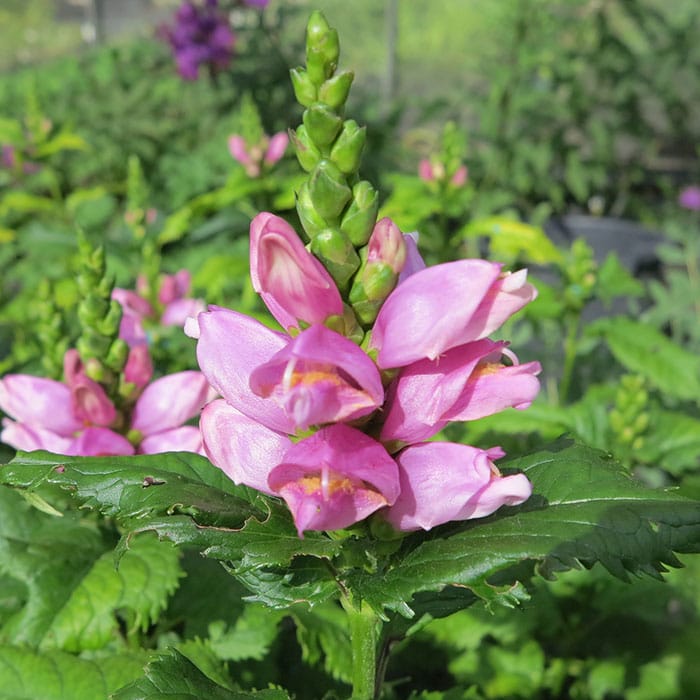When you drill down into the lists of late-blooming perennials, there’s more to uncover than echinaceas and asters. Not that there’s anything wrong with these, but sometimes it’s interesting to try something different.
Turtlehead (Chelone obliqua) falls into that category for me. I’ve grown the common purple variety for at least a dozen years in heavy clay and semi-shade. A white variety didn’t last long because it always developed powdery mildew, so out it went. One of turtlehead family’s attributes are their glossy green leaves from early spring through late fall so there was no point in putting up with mildewed foliage.

The plant’s common name comes from its apparent resemblance to the head of a turtle. Turtlehead, hardy to Zone 4, grows to between two and three feet (60 to 90 cm), likes full sun to part shade and enjoys moist soil conditions — even waterside settings. It also makes a good cut flower, attracts bees and butterflies, and is deer-resistant.
If this all sounds appealing, look for turtlehead next spring. You can read more about this sturdy perennial in the article Hummingbirds love the nectar from turtlehead.
Podcast on pesticide bans
Helen Battersby of the popular blog Toronto Gardens was this week’s guest on Growing Greener, a 30-minute podcast hosted by Thomas Christopher in the U.S. The conversation’s focus was on Ontario’s nearly 11-year-old ban on pesticides used for cosmetic purposes. According to Helen, the regulations were updated in May of this year. It remains to be seen, she says, if these changes, in fact, weaken the ban. The podcast provides a good background and explanation of the issue.
Saving tomato and pepper seed
For all of you savouring the last harvest of your favourite peppers and tomatoes, consider saving seed for next year. Here’s how in the article Saving tomato and pepper seed..
UFOs: a new method for growing cherry trees
A farm in Beamsville, Ontario, is trialling a new method for growing cherry trees called Upright Fruiting Offshoots (UFOs), developed at Michigan State University. The 200 young plants are being trained along wires to make harvesting more efficient than traditional growing methods.
By tying the young trunks to a horizontal wire, the trunks are forced to grow sideways, while fruiting offshoots that grow outwards are affixed vertically to additional trellis wires. Voilá: more light for the fruit along with easier harvesting.








